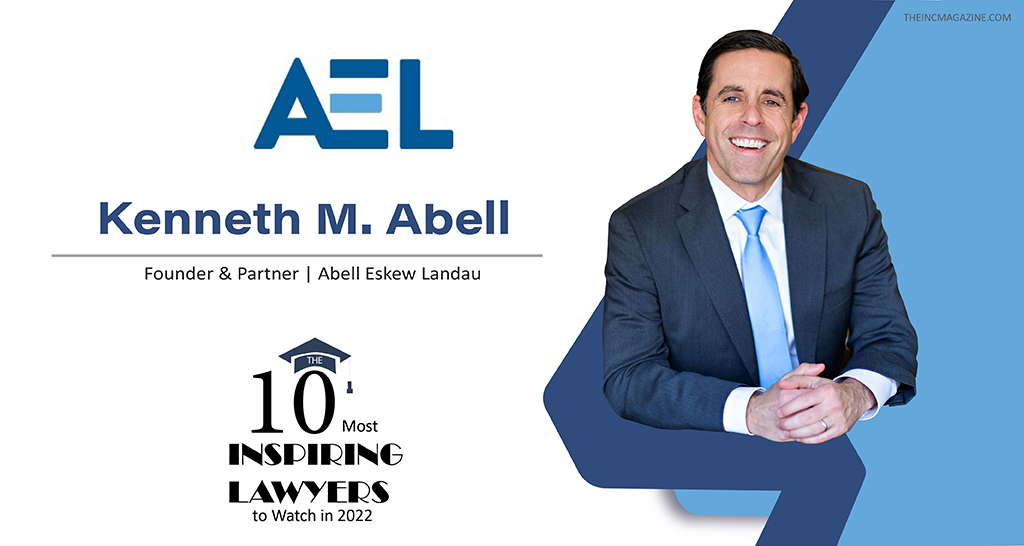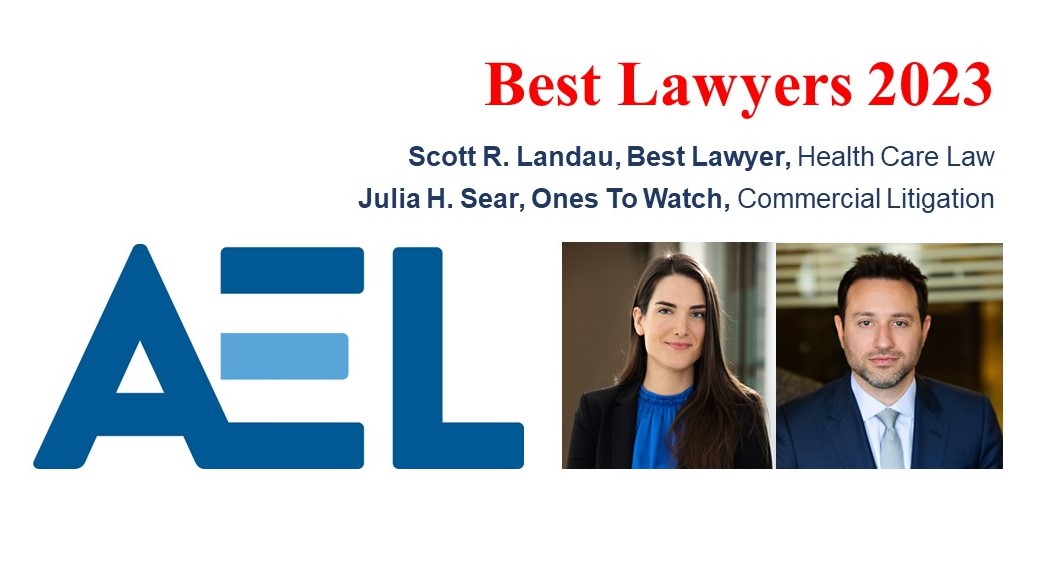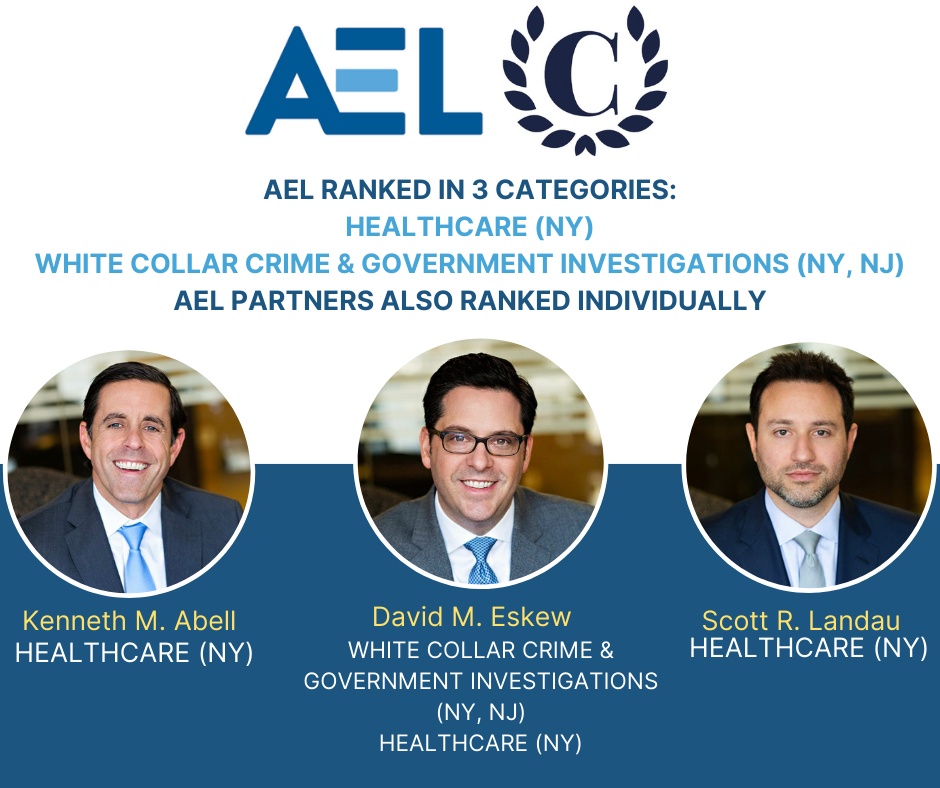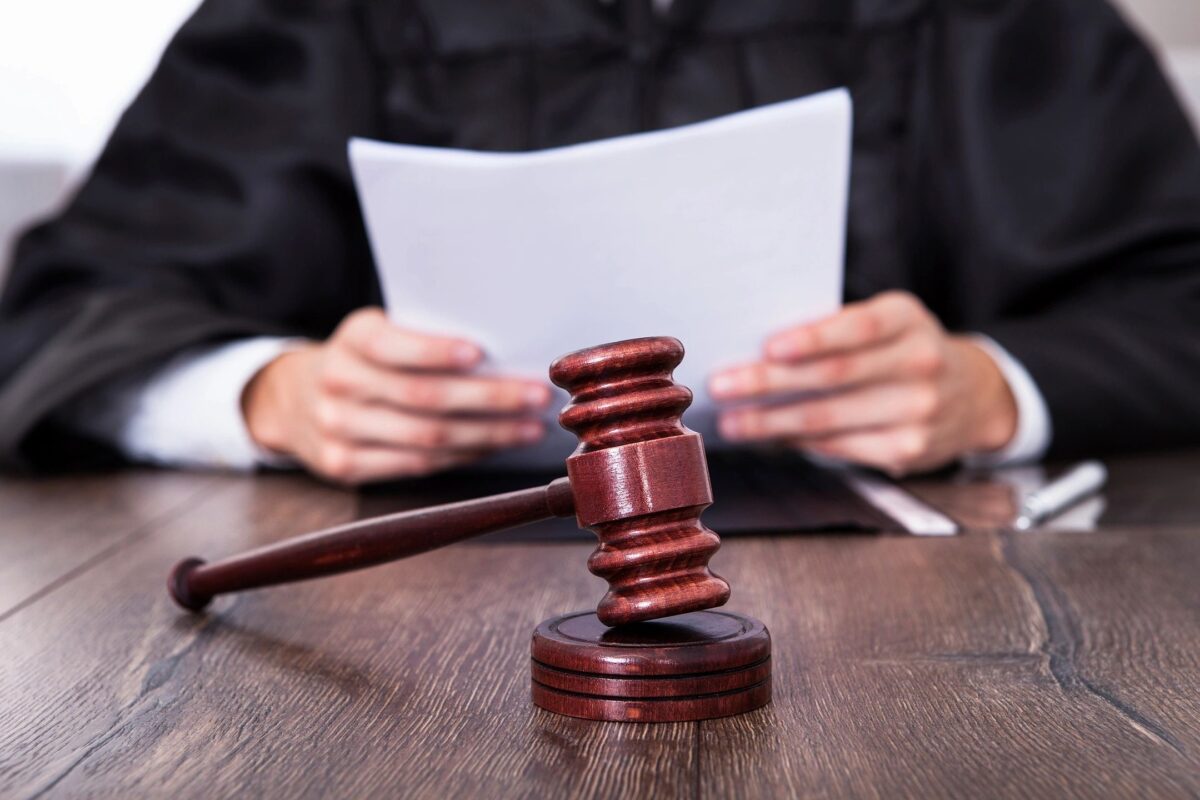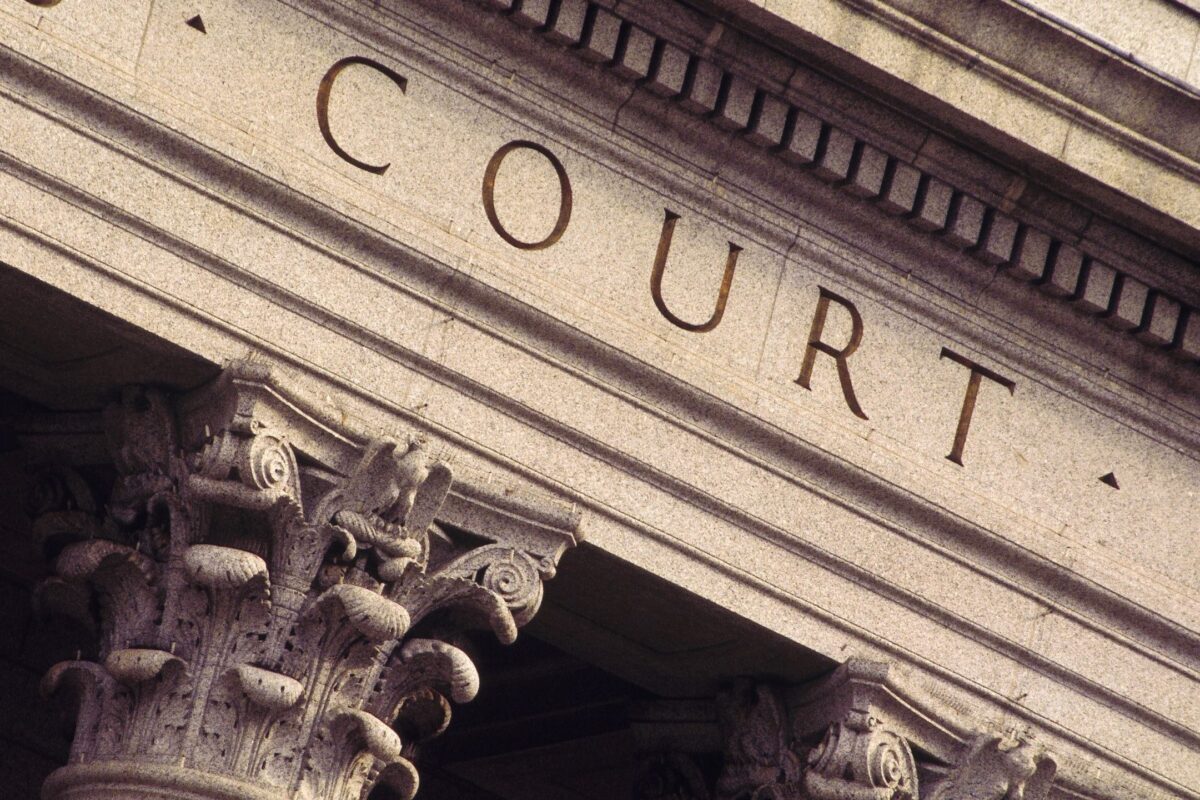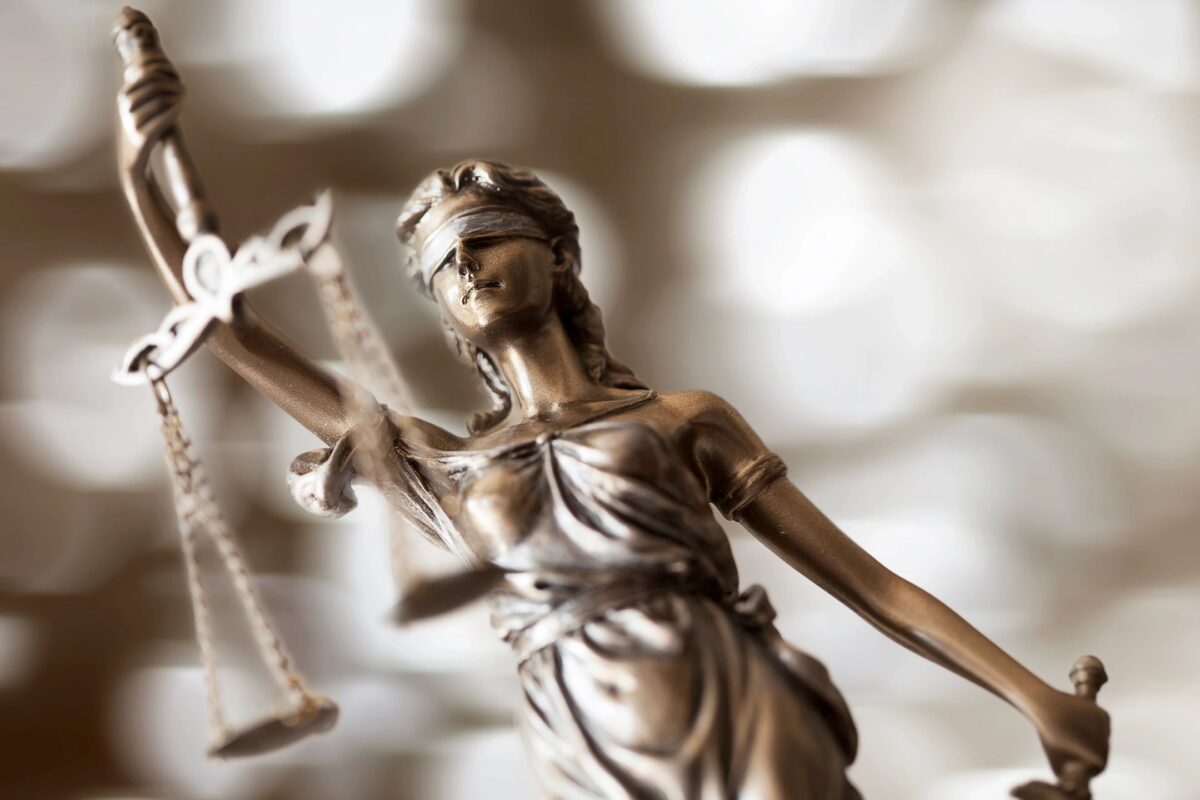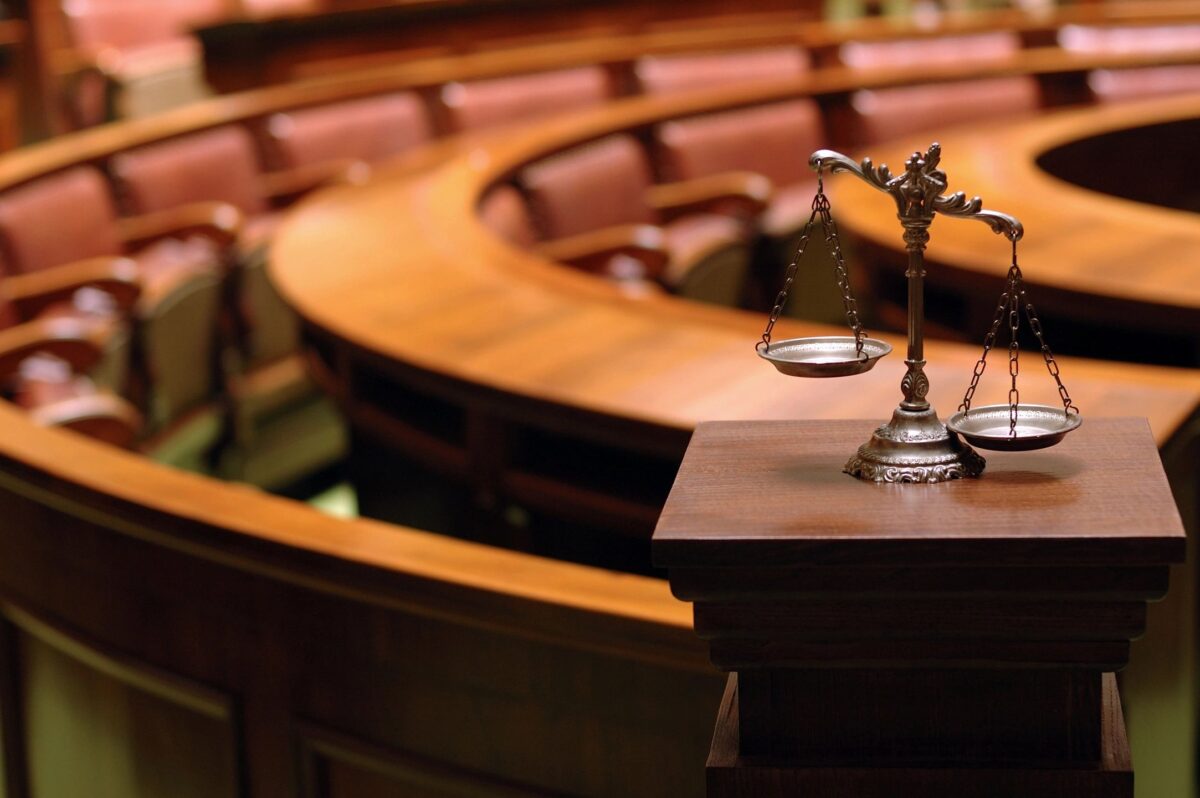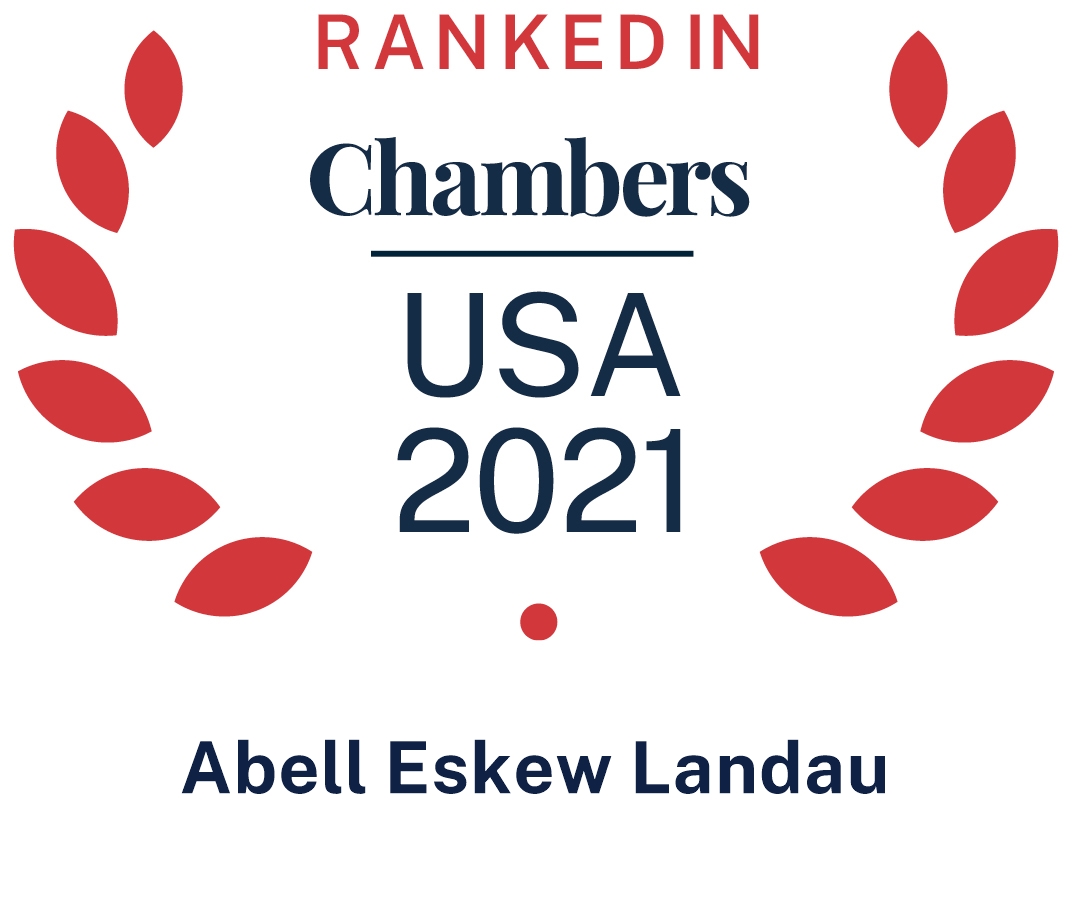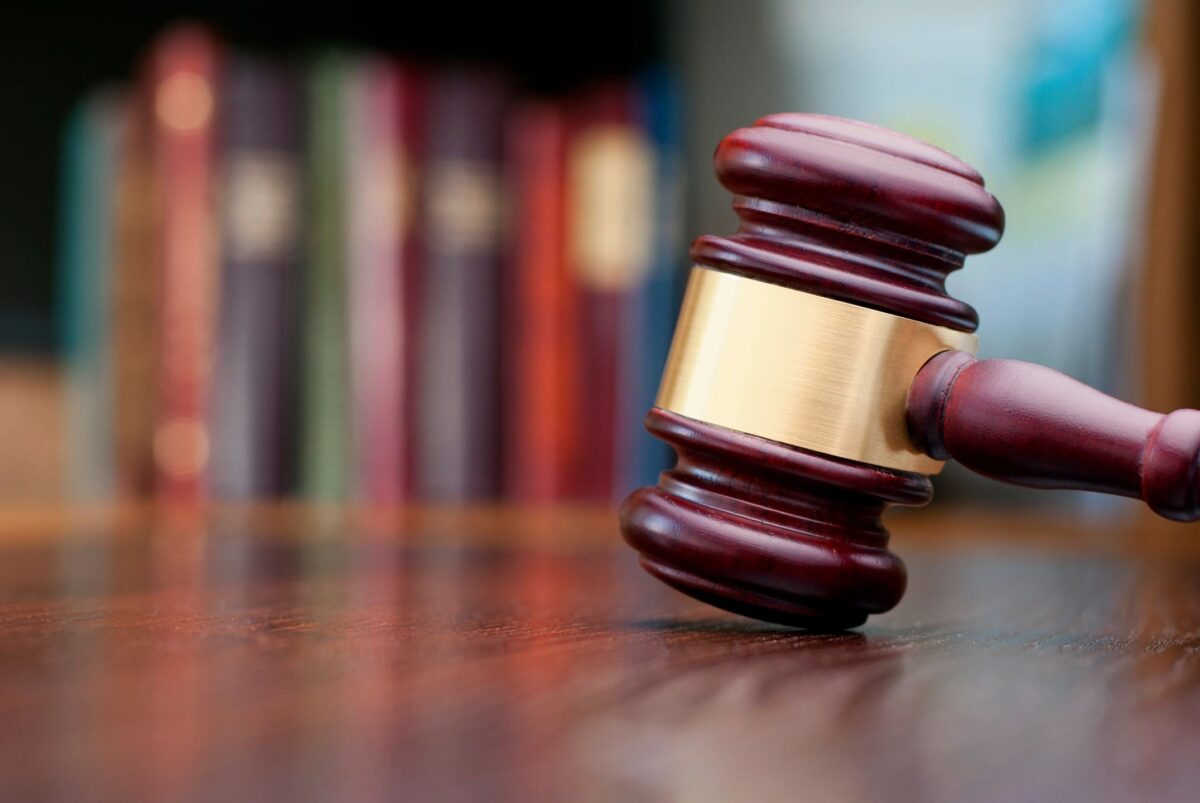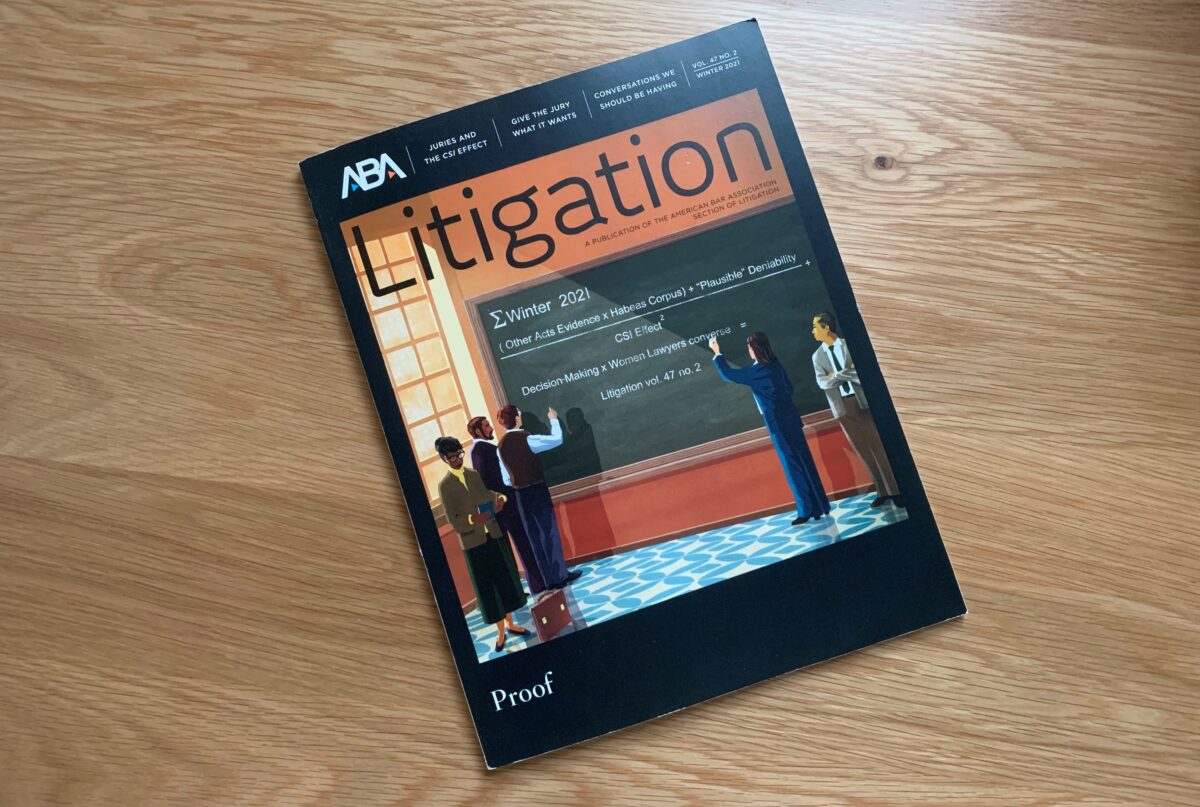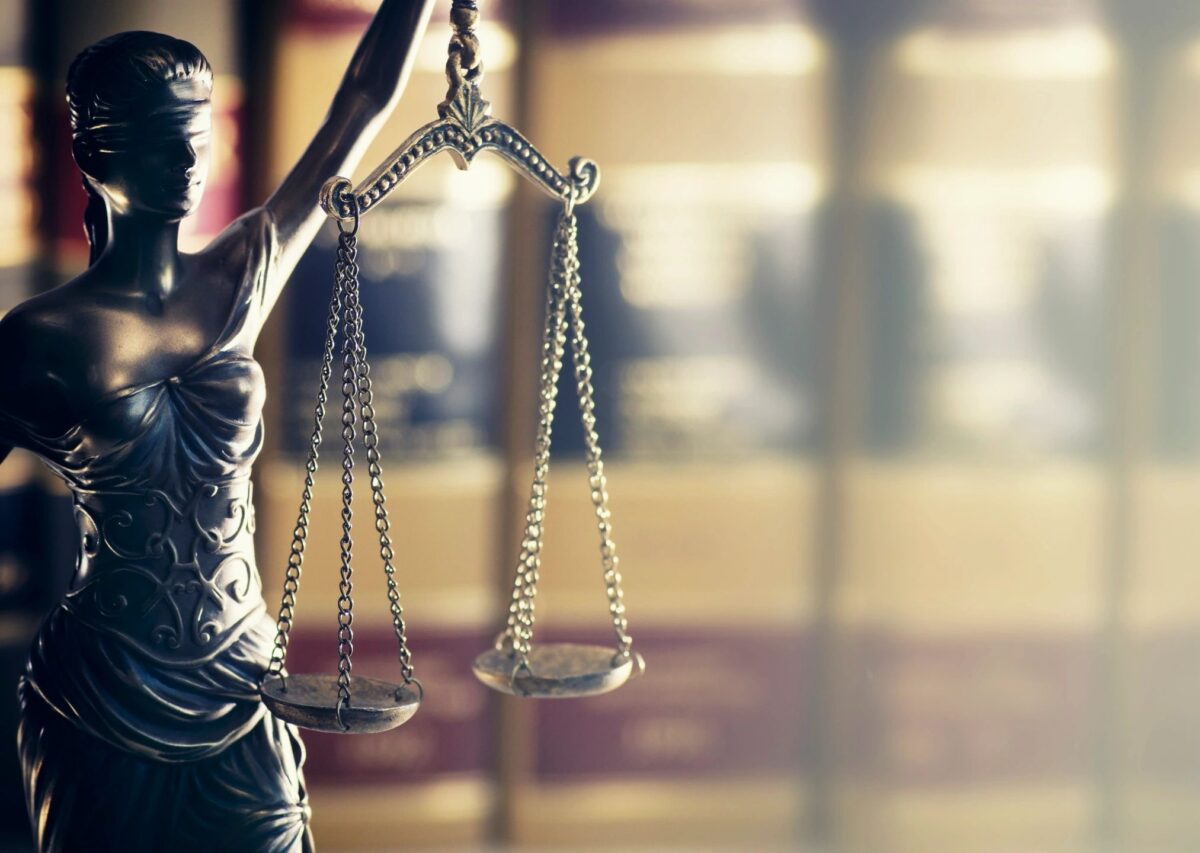The following article was originally published in the American Bar Association’s Litigation Journal, Vol. 47 No. 2 (Winter 2021) and was co-authored by AEL partner David M. Eskew and Teitler & Teitler partner Paul Murphy. You can read the article in its full form through the link here, in the post below, or by subscribing to the ABA Litigation Journal.
“He did it before, do you really think he didn’t do it this time?”
This is the stuff of a defense lawyer’s nightmares. Lawyers lose sleep over the notion that, despite all their hard work defending the specific charges in a case, their client’s prior sins will nevertheless be admitted into evidence and take on outsize importance in shaping the jury’s impressions of the client. And for good reason. Evidence of a person’s propensity to act in a certain way can be utterly devastating. Jurors may focus unduly on the prior acts of misconduct to the exclusion of the government’s heavy burden of proof, and they may be more willing to accept other evidence offered against the defendant because it makes more sense, given that, in their minds, the defendant is a bad actor. The converse is often a motivating factor behind the tactic of many white-collar defendants who have otherwise been pillars of the community to parade character witnesses before the jury in fraud cases to testify about the defendant’s reputation for honesty. These witnesses, by design, are selected because they know the defendant as a person and are completely ignorant of the facts of the case. The defense is of course hoping that the jury will conclude that the defendant is trusted by other upstanding members of his or her community so they will be inclined to discredit certain evidence offered against the defendant or to credit certain defenses.
In a slightly different use of propensity evidence, defendants often use what is referred to variously as reverse 404(b) evidence or reverse “other acts” evidence in an effort to lay the blame for the crime they are charged with committing at the doorstep of a third party. They hope that by showing evidence that the third party has committed criminal conduct in the past that is similar to what the defendant is charged with, the jury will have a reasonable doubt as to the culpability of the defendant. The potential for the jury to draw these types of inferences from “other acts” evidence is real. After all, it is human nature to think that we all act consistently with our character traits. Not only does the average person feel these sentiments in their gut, but the concept that an individual may be inclined to act in accordance with his or her “bad” or “good” character traits is embedded in some of the most consequential areas of criminal law. In the federal system, for instance, a defendant’s prior criminal history is part of a complex calculation used to determine a defendant’s sentencing guidelines range. More generally, federal district courts are obligated to consider a defendant’s “history and characteristics” when fashioning an appropriate sentence. Prosecutors will lean on prior criminal offenses not only in connection with the technical calculation of a defendant’s criminal history score but also as evidence that a greater sentence is needed to promote respect for the law, protect society from further crimes of the defendant, and deter the defendant from future crimes. It would be fundamentally unfair to permit prior criminal acts, both as evidence of a defendant’s general character and as a predictor of future conduct, to increase jail time if there were not some correlation between prior bad acts and future conduct. Defense attorneys attempt to paint a wholly different picture of a defendant by submitting character reference letters designed to persuade the court that a defendant’s crimes of conviction were an aberration not likely to be repeated in the future. In short, propensity is relevant.
But “propensity” is a dirty word when it comes to trial practice. Rule 404(b) of the Federal Rules of Evidence states that “evidence of a crime, wrong, or other act is not admissible to prove a person’s character in order to show that on a particular occasion the person acted in accordance with the character.” Many states have similar rules. These rules apply equally in criminal cases and in civil cases, although the balancing of the probative value against the potential for unfair prejudice may vary between criminal cases and civil ones, especially civil cases that end up in bench trials. One constant, though, is that the rules make it improper to introduce evidence of a defendant’s other bad acts solely to show the defendant’s propensity. Countless court cases and scholars agree on this point, and it is not open for serious debate. Evidence of other bad acts of a defendant may not be used for the sole purpose of showing that a defendant did it before, so he must have done it again. The devil, of course, is in the details, and the real question is whether we practice what we preach. What’s said to be kept out of evidence with a padlock on the front door is regularly let in through the back door. We would be fooling ourselves if we really thought that propensity evidence was not regularly part of trial practice. It is.
This is not to say that prosecutors are acting with unchecked abandon, defying the rules of evidence and asking juries to con- vict purely on the grounds of a defendant’s propensity to be a bad guy. Nor are trial judges necessarily asleep at the switch in permitting such evidence to be admitted in trials. To the contrary, such evidence is expressly permitted by the rules of evidence in appropriate circumstances. Evidence of prior bad acts that is also intrinsic to a charged crime makes a fact that is material to the outcome more likely and therefore is directly relevant to proving the offenses charged. As such, it is generally admissible unless the defense can convince the trial judge that its probative value is substantially outweighed by the danger of unfair prejudice, confusion, or waste of time. Even where it is not intrinsic to the crimes charged, “other acts” evidence is admissible if it satisfies one of the delineated exceptions in Rule 404(b), which expressly permits the admission of “other acts” evidence if such evidence is “admissible for
another purpose,” including “motive, opportunity, intent, prepa- ration, plan, knowledge, identity, absence of mistake, or lack of accident.” These exceptions are expansive. Indeed, commentators have taken the view that the exceptions to the general rule against propensity evidence long ago swallowed the rule. Concepts such as motive, intent, plan, knowledge, and identity are in play in many criminal cases. In cases requiring proof of specific intent, like willfulness, “absence of mistake” and “lack of accident” are often critical parts of the government’s proof.
In determining the admissibility of “other acts” evidence, a federal court employs a well-accepted four-part test: First, the evidence must have a proper evidentiary purpose; second, the evidence must be relevant; third, the evidence must not be more prejudicial than probative; and, fourth, the evidence must be accompanied by a limiting instruction if requested. Despite the safeguards built into the rules of evidence to try to avoid the prejudice that naturally flows from propensity evidence, one would be well within his or her rights to question whether evidence admitted for a proper, non-propensity purpose is nevertheless grounded in what we regularly think of as “propensity.” Regardless of the label affixed to it or the purpose for which it is legitimately offered, the fact is that all such evidence is relevant because it raises inferences that are based on a defendant’s propensity to act in a certain way. There is no way to completely avoid it. If, for instance, “other acts” evidence is offered to show that, on a prior occasion a defendant used a similar method to knowingly defraud someone, in order to show that on the occasions charged the defendant knew he was committing a fraud and was not acting in good faith, isn’t that just another way of asking the jury to conclude that he did it before and he must have known it was wrong this time?
“Other Acts” Evidence Has Become Routine in Criminal Trials
How has “other acts” evidence become such a routine part of criminal trials? The answer is multifaceted. First, evidence of other bad acts is often cast as direct or intrinsic evidence. Prosecutorial charging decisions can shape what counts as relevant evidence. Charging a case as a conspiracy or crime premised on a scheme or pattern, for instance, may allow prosecutors to offer into evidence other acts of misconduct by a defendant that would otherwise have been thought of as propensity evidence because such evidence becomes inextricably intertwined with the charged offenses. In this way, uncharged acts of securities fraud or health care fraud, when characterized as part of an overarching charged scheme or conspiracy, are generally admissible to prove the scheme or conspiracy. Likewise, “other acts” evidence may be admitted to complete the story of the charged crime without being subject to the scrutiny of Rule 404(b). Even if the
evidence is not intrinsic to the charged offenses or necessary to complete the story, a defendant’s other acts are often admitted to show knowledge, motive, a particular modus operandi, or to blunt a defense—especially where a defendant claims that what she did was simply a mistake, an aberration, or otherwise done without criminal intent. Casting prior bad acts evidence as rel- evant to prove knowledge or intent—an element in nearly every criminal offense—brings such evidence into play in almost every conceivable case.
In federal courts, “other acts” evidence regularly becomes an issue in white-collar fraud prosecutions due to the heightened mental state required to prove such crimes beyond a reasonable doubt. Securities fraud, health care fraud, and other federal fraud offenses generally are specific-intent crimes requiring a showing of knowing and willful acts done with an intent to defraud. Conduct is not willful or committed with fraudulent intent if the defendant “acted through negligence, mistake, accident, or due to a good faith misunderstanding of the requirements of the law.” Such crimes are particularly susceptible to defenses of good faith, honest mistake, and lack of fraudulent intent.
This is regularly on display in the corporate fraud context. Senior executives of successful multinational corporations, who in the normal course are prone to hold themselves out as masters of the universe, regularly present defenses in criminal securities fraud prosecutions that are based on the notion that they were unable to fully grasp pertinent concepts of finance, accounting, and law. Instead, they contend that they relied in good faith on professionals such as accountants, finance executives, and lawyers to assure them that what the corporation did was legal. The defense is often some combination of lack of knowledge of the operative facts and a good-faith belief that the corporation was not, in fact, cheating.
These types of defenses were prominent in the wave of ac- counting fraud scandals that followed the implosion of Enron. Executives began pleading ignorance of the fraudulent aspects of various earnings management practices. Roundtrip transactions where no risk was transferred and other accounting gimmicks used to prop up quarterly earnings and financial statements were said to have been blessed by armies of high-paid accountants and lawyers. These defenses can be difficult to penetrate be- cause corporate chieftains often insulate themselves from the dirty work that happens in their organizations. The government chips away at the defenses in a variety of ways. One is through evidence of other acts of misconduct tending to show that the executives knew they were cheating and were inclined either to break the rules or turn a blind eye to obvious problems. Indeed, the government sought to introduce 404(b) evidence against Enron chairman and chief executive officer Kenneth Lay relating to his knowledge of a prior fraud scheme involving deceptive trading at an Enron subsidiary over a decade earlier to show his knowledge, intent, absence of mistake, motive, and modus operandi concerning the securities and other fraud charges that led to the downfall of Enron. It is worth noting that corporate fraud defendants have had at least some success in keeping “other acts” evidence out of trials by convincing the trial court that the evidence would be marginally relevant and unduly prejudicial and would risk diverting the jury’s attention from the central issues by creating a trial within a trial.
Criminal Tax Fraud Cases
Nowhere is the government’s burden higher than in criminal tax fraud cases, which the Supreme Court has held require the government to prove beyond a reasonable doubt that the defendant knew he was breaking the law. The Court held that even a mistaken and inherently unreasonable belief that the law did not require taxes to be paid on income would be a defense if the jury found that the defendant in good faith believed it to be the state of the law. Cheek v. United States, 498 U.S. 192, 203 (1991). Given the government’s high burden, tax cases regularly involve what would otherwise be considered “other acts” evidence. Imagine a case in which the defendant is charged with tax fraud for filing false tax returns for the calendar years 2018 and 2019. The government must not only prove that the defendant acted knowingly in 2018 and 2019, those tax years charged directly in the indictment, but must also be prepared to blunt the defense that the defendant was negligent, sloppy, unwitting, disorganized, or just plain ignorant. As a result, the government can be expected to mine the defendant’s prior tax filings to find some evidence that the defendant was aware of some requirement not met in the charged tax years. Perhaps the defendant previously recognized some revenue in connection with a Schedule C business that she did not in the charged tax years or did not take a deduction or credit that is now claimed in the charged tax years. In this scenario, the government will likely argue that the prior tax returns are intrinsic evidence—not 404(b) evidence at all—necessary to prove that the taxpayer defendant had the requisite knowledge and understanding of the tax laws to satisfy its burden of proving willfulness. More to the point, if the prior tax returns show a similar pattern as the charged tax years, the government will seek to introduce the tax returns from prior years as evidence that the defendant acted knowingly and willfully with respect to the years charged.
Sexual Assault Cases
More recent developments in the area of “other acts” evidence demonstrate that society is especially unwilling to allow defendants with prior histories of particularly heinous acts to cloak themselves in defenses of mistake and the like. Sexual assault cases have been found to warrant this type of special consideration. In federal sex crime cases, the rules clearly favor the admissibility of “other acts” evidence. Specifically, Federal Rules of Evidence 413 and 414 expressly permit the introduction of evidence of prior bad sex acts in sexual assault cases. States have recently demonstrated a willingness to entertain more of this type of “other acts” evidence in cases involving sexual assault, applying their existing rules in a seemingly broader way to permit such evidence.
Recent high-profile trials arising out of the #MeToo movement relied heavily on evidence of other acts of sexual assault. These cases illustrate the manner in which other bad acts evidence may be introduced at trial and the devastating effect of such evidence in sexual assault cases.
Harvey Weinstein, for instance, was charged with rape and sexual assault against two victims. The indictment also included a count charging him with being a sexual predator, making the testimony of a third victim directly relevant to prove the predatory aspect of the charge, an element of the offense that the prosecution was required to prove beyond a reasonable doubt. The prosecution also sought to offer the testimony of three additional witnesses to testify about their allegations that Weinstein sexually assaulted them. This testimony did not result in charged offenses but clearly fell into the category of “other acts” evidence of the defendant. After a pretrial hearing that was closed to the public, the trial court permitted the government to call these additional witnesses.
In New York, where Weinstein was tried, such witnesses are known as Molineux witnesses after the seminal 1901 New York Court of Appeals case that spawned much of the law nationwide concerning “other acts” evidence. In the Molineux case, the court reversed the conviction of a doctor charged with the very 19th-century crime of murder by poisoning because the trial court had permitted testimony about another similar incident. The importance of such evidence to a conviction is illustrated by that very case. The defendant there was convicted at his first trial when the trial court allowed evidence of a prior effort by him to commit another murder using the same pattern. Reporting indicates that, after the conviction was reversed, the defendant was tried a second time without the prior acts evidence, and the jury acquitted.
In Harvey Weinstein’s trial, the “other acts” evidence was likely of a similar value to the prosecution. Public reporting about the Molineux witnesses there indicated that they offered highly damaging testimony against the defendant. His counsel has said publicly that they intend to make the introduction of these three additional witnesses a central focus of their appeal.
While the nature of our system is such that we rarely learn why the jury chose to do what it did, one interesting aspect of the Weinstein trial is that the jury acquitted him of the count of being a sexual predator, where it would have had to accept the testimony of the third sexual assault victim beyond a reasonable doubt because her testimony was effectively an element of a count of the indictment. But the jury did not necessarily have to apply the same standard of proof to its evaluation of the Molineux witnesses’ accounts in order to use their testimony to support the conclusion that Weinstein was guilty. This is so because a defendant’s involvement in other bad acts generally need not be established beyond a reasonable doubt for a jury to consider it. In the federal system, the Supreme Court has held that, to admit the “other acts” evidence, the district court need find only that the trier of fact could conclude that the evidence demonstrates by a preponderance that the other acts occurred and that the defendant participated in them. See Huddleston v. United States, 485 U.S. 681, 685 (1988).
The value of such propensity evidence was also on full display in the case against Bill Cosby. Cosby’s first trial ended in a hung jury after the trial court permitted only one “prior act” witness to testify about another uncharged instance of sexual assault by the defendant. At the retrial, the court permitted the prosecution to call five other victims who testified about similar, uncharged conduct by the defendant. This evidence was offered to show that Cosby engaged in a common plan, scheme, or design—essentially, that Cosby had engaged in a particular modus operandi when committing the offense charged—and that their testimony demonstrated that his conduct was not the product of a mistaken belief that the sex was consensual. With this additional evidence reflecting other criminal acts, the jury convicted on the retrial. And the intermediate appellate court in Pennsylvania recently upheld the conviction against a challenge based in large measure on the introduction of this “other acts” evidence. Propensity evidence can raise its head in less traditional, but equally damaging ways. Prosecutors can capture other acts of the defendant by simply charging other bad acts in separate counts of the indictment, even if only loosely related to the top counts.
Doing so places additional pressure on the defendant and nearly ensures that damaging and possibly highly prejudicial evidence against the defendant will be admissible at trial.
“Joe Exotic” and Propensity Evidence
The manner in which other seemingly unrelated acts can be charged in a single indictment can be observed in the trial of Joseph Maldonado-Passage, also known as “Joe Exotic,” the so-called “Tiger King” from the wildly popular Netflix documentary of the same name. Federal prosecutors initially charged Maldonado-Passage with two counts of using an interstate facility to commit murder for hire in connection with his alleged efforts to murder a conservationist who had for years dogged Maldonado-Passage’s operation of a “roadside zoo” in Oklahoma. A few months after his initial indictment and in advance of trial, the government added 19 additional counts, all related to Maldonado-Passage’s alleged mistreatment of exotic animals at his zoo. The wildlife counts were supported by gruesome evidence, including tiger skulls excavated from the zoo’s property that belonged to big cats Maldonado-Passage was said to have euthanized and buried.
Though loosely related to the top count, the additional counts ensured that the government would be able to introduce extensive and detailed evidence regarding Maldonado-Passage’s mistreatment, breeding, and sale of numerous exotic cats. Though of lesser severity than the murder-for-hire plot (certain of the counts under the Endangered Species Act were misdemeanors), the animal mistreatment counts were, no doubt, supported by much stronger evidence than the murder-for-hire plot and were highly prejudicial. As noted by a journalist covering the trial, “[i]n the news, we talk about shootings and killings every day. But people will protest and they will not tolerate animal abuse. It was almost strategic to bring all of these charges at the same time.”
Arguing against the admissibility of such evidence is a tall task that is most often unsuccessful. Defense attorneys are limited to arguing that the introduction of certain “intrinsic” evidence or the joinder of certain counts is merely pretextual and that the government is attempting to shoehorn propensity and otherwise inadmissible “bad character” evidence into its case in chief. For example, in the “Tiger King” trial, defense attorneys argued that the murder-for-hire counts should be severed from the so-called wildlife counts. In their motion, defense attorneys contended that the evidence in support of the wildlife counts “would not be admissible in the government’s case in chief in the trial of the murder for hire charges” and that “[s]uch evidence will ir- reparably prejudice the jury beyond any curative effect of a jury instruction.” The defense went on to argue that “[t]he prejudicial effect of evidence relating to alleged slaughter of beloved ani- mals in a trial for a murder for hire plot is clear and substantial, particularly when Mr. Maldonado-Passage’s public identity is well known as an operator of an exotic zoo.”
But the rules regarding the joinder of counts and relevance generally are permissive, and relief is rarely granted. In the “Tiger King” case, defense counsel’s motion played out in a familiar unsuccessful pattern. The government opposed the motion, arguing that the murder-for-hire counts and the wildlife counts were part of a common scheme and plan, all of which were related to Maldonado-Passage’s long-standing feud with the conservationist victim, including her efforts to collect on civil judgments she had obtained against him, and the defendant’s efforts to profit from his roadside zoo that featured and bred big cats. By tying the more severe murder-for-hire counts with Maldonado-Passage’s businesses, finances, and long-standing feud with conservationist groups, the government was easily able to articulate a basis for charging all of the conduct together in a single indictment. The court agreed that the counts were interconnected and properly joined and denied the defendant’s pretrial motion.
The government also used “other acts” evidence during the “Tiger King” trial. In that case, the government introduced testimony about prior conversations Maldonado-Passage had with others regarding the victim’s assassination, along with a litany of social media posts and videos that Maldonado-Passage had made about his would-be conservationist victim. In the posts, Maldonado-Passage was alleged to have used direct and graphic language, repeatedly referring to her murder, including bizarre and grisly methods such as venomous snakes and decapitation. As the prosecutor noted in the documentary, “[i]t was part of the government’s evidence that we showed the jury a variety of the social media postings that Mr. Passage had made that referenced [the victim] in a violent way—having her killed, or wishing her dead.” The justification for the admission of such evidence was that the evidence showed the defendant’s motive, intent, and plan related to the charged murder-for-hire plot.
As can be seen from the examples above, the “proper purposes” for the admission of “other acts” evidence are numerous and the standards of relevance are broad. For that reason, there are many avenues for the admission of such evidence, and the standard for admission is often easily satisfied. While courts do what they can to police the use of this type of evidence, the reality is that once “other acts” evidence comes in—even for a stated non-propensity purpose—there is no controlling how a jury will view it. Limiting instructions are likely only to confuse the jury and cause them to fall back on what comes naturally to them—if the defendant did it before, he’s more likely to have done it again. Courts, including the Supreme Court, and commentators have long questioned the effectiveness of limiting instructions in situations where compliance with such an instruction would require a particularly difficult form of “mental gymnastics.” It could be argued that it is simply too much to ask human beings to put aside everything they have used over the course of their lives to evaluate people—namely, judging them by what they have done in the past. This is especially evident when jury instructions also separately advise juries to use their common sense when judging, among other things, the weight of the evidence. People view others as liars because they have lied in the past. Others are considered cheats because they have cheated in the past. We ask jurors to bring their common sense and life experience to the courtroom to judge the facts of a case, but when it comes to propensity evidence, we ask them to do exactly the opposite. Put aside your life experience and your tried-and-true methods of judging circumstances and people, and limit how you think about the fact that the defendant com- mitted the very crime he is charged with on a prior occasion. Do we really think that everyday people can put these issues aside?
What the Defense Can Do
What is a defense lawyer to do? Given the potential prejudice inherent in this type of evidence, defense counsel must make every effort to persuade a trial judge that the evidence is not properly admissible. Step one of course is a challenge to the proper purposes the government seeks to offer it for and to take aim at the relevance of the evidence. Courts do often reject government bids to offer “other acts” evidence on the threshold ground that it does not actually satisfy one of the exceptions in Rule 404(b) or that it is simply not relevant to the issues charged in the case. Failing that, the best argument defense counsel can deploy is that the “other acts” evidence will be unfairly prejudicial.
In the federal system, Rule 403 is the rule that gives a trial judge wide discretion to preclude otherwise relevant evidence onthe grounds of “unfair prejudice, confusing the issues, mislead- ing the jury, undue delay, wasting time, or needlessly presenting cumulative evidence.” Defense lawyers must hammer away at the unfairness of the prejudice. Facts such as remoteness in time, infrequency of conduct, a lack of similarity between the “other acts” and the charged conduct, intervening conduct or events, and the need for extensive additional testimony or evidence—the so-called “trial within a trial”—are all powerful arguments that the other acts sought to be admitted are more prejudicial than probative and are likely simply to confuse the issues and the jury. Indeed, it is often the case that the prosecution’s proof of the defendant’s involvement in the other bad acts is somewhat diffuse or the proofs of the other acts thin. But it is not enough to argue that evidence is prejudicial. It must be “unfairly” prejudicial. In other words, counsel must make the case that the “other acts” evidence would cause the jury to base its decision on something other than the evidence in the case. For this point, counsel can argue that the evidence would confuse, distract, or incite the passions of the jury to such an extent as to taint their consideration of the core issues in the case. In sum, defense counsel needs to be constantly vigilant to try to keep out “other acts” evidence. This should be done through carefully crafted pretrial motions and a clear trial plan that avoids opening any doors to such evidence. Some “other acts” evidence may be truly harmless and weak by nature, so the worry that the jury will do anything with it is overstated. But when it comes to highly damaging prior acts of a defendant, the admission of such evidence for a proper evidentiary purpose has the potential to carry such damaging effects that counsel should make all efforts to keep such evidence out. Counsel should not hold anything back at the trial level, as appellate courts will review a district court’s decision to admit such evidence for an abuse of discretion. In the federal system, if a district court considers all the evidence and arguments when weighing the probative value against the prejudicial impact and decides to admit the evidence, an appellate court will be loath to overturn a guilty verdict on that ground. And if such evidence is admitted, the defense counsel must work hard to limit the prejudicial impact of the evidence. Point out the weaknesses in the proof regarding those prior bad acts, and argue the dangers of reading too much into other acts that are not directly related to the charged offenses. And maybe, just maybe, tell the jury, “Just because he did it before, doesn’t mean he did it again.”

